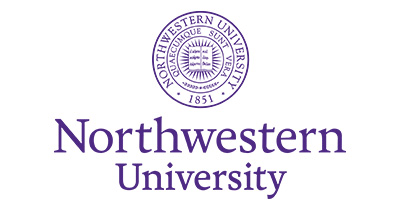Fulcrum: An Annual of Poetry and Aesthetics, is a tremendously capacious literary journal published in Cambridge, England, and edited by Philip Nikolayev and Katia Kapovich. The newest issue, no. 7, includes (among many other very interesting things) “Evgeny Baratynsky: Poems from Twilight,” with poems introduced and translated from Russian by Peter France, and a second introductory essay and extensive commentaries by Ilya Kutik (also translated by France). Kutik describes Baratynsky (1800-1844) as a poet who was submerged after his death by the literary fashions of the Russian nineteenth century and whose work was resuscitated by much later poets, especially Osip Mandelshtam, who saw Baratynsky’s work as a valuable un-Romantic or even anti-Romantic poetic precedent, in the midst of Russian Romanticism, for Russian poetry in the twentieth. Of course Peter France and Ilya Kutik see in Baratynsky far more than that—but I mention this one aspect of Baratynsky’s achievement simply to situate him among twentieth-century poets, and to suggest why a twentieth- and twenty-first century Russian poet, Kutik, is interested in bringing into English at least a sampling of Baratynsky’s poems and an account of Baratynsky’s importance. Kutik’s commentary runs to more than 30 pages, and along with more than a dozen poems and the substantial introductory essays, this is in effect an impressive small book. Kutik’s commentaries are especially valuable. Returning to one of France’s deftly worded translations after reading Kutik’s commentary on the poem enriches the English version wonderfully.
Now I will copy here a few comments Kutik makes on rhyme, which readers of this series of my small essays on poetry will know is of great interest to me. (Not because I use it in my own poems very often—although I do highly prize rich sound-textures—but because of how Kutik explains rhyme as a mode of thought, which I very much think it is, even though its potential as such is not realized by very many poets in English, and in all phonetic repetitions, not only in full rhyme. It’s not realized because English-language poets can’t do so, but because our literary history has carried us through times, and into times, where for other reasons poets don’t choose to do so. This has been true for centuries, even when poetry was at the height of its use of rhyme.)
Twilight was Baratynsky’s last book, was written over about ten years’ time, and he organized his book very carefully. The final poem in the collection is “Rhyme.” Baratynsky’s figure for rhyme is the dove that returns to Noah’s ark with an olive leaf or leafy twig in its beak. That is, from a new world elsewhere, as yet unknown, the dove brings an answer to Noah’s question: does any land yet exist that stands above the flood? Neither the question nor the answer is expressed in words. The question is the releasing of the dove, and the answer is the twig brought back by the dove–a human gesture, a living bird; then a material object, presumably still silver-green with life. And, as I mentioned, from a place not yet known. Kutik writes that rhyming for Baratynsky (and for himself and so many others) is “as if the Russian poet was throwing a word into the linguistic abyss and waiting to see what other word it will return with.”
That is not a figure that I can imagine being used by any poet writing in English of French (the two languages that Kutik mentions as comparisons) or for that matter in Spanish or Italian or Portuguese (a few more languages that I can add to the list), in any century. What would the figure for rhyme be for a poet writing in English, formed by English-language poetic traditions? If it had come in that dove’s beak, it would have had to be something of a kind already preserved on the boat–but on the ark there are no leafing plants, only pairs of animals. What other figures might we imagine for rhyme in English?
In just a few paragraphs, Kutik’s succinct account of rhyme as a part of the poetic process is revelatory of it as a poetic mode of thought. He speaks of the remarkable flexibility of Russian syntax and the richness of rhyme sounds in a poetic tradition in which what we call half-rhymes are considered true rhymes— these aspects account for the acrobatic Russian line; he also speaks of the effect on thought of producing the rhyme-word in the context of a stanza, which I have not before seen discussed; and he writes that one “can see why free verse finally triumphed in French and English poetry, since it offers a liberation from the limitations and set patterns of the language, which in Russian do not exist.”
“[R]hyme is for the poet above all a searching device that animates the language.” And it is, he writes, a kind of companion of the poet even where there are no others.
Here’s something apropos of the poet’s sense (which Baratynsky clearly felt, in that last poem of his last book) of writing with the poetry itself, the language itself, as the needed companion. In an interview of the Russian poet Victor Sosnora (b. 1938) by Darra Goldstein, published in 1988 in the New York Review of Books, Sosnora says, amidst other responses equally extreme and yet persuasive in showing us a man of intense, sometimes unlikely, and sometimes almost repellantly truthful opinions: “I don’t write for the present. I don’t write for the future, either. […] I write because that’s what it takes for me to live. If I’m not published, that doesn’t mean that I don’t exist. […] An ideal reader has a talent equal to that of the writer. I’ve had three such readers who understood poetry in the absolute sense: Nikolai Aseev, Lilya Brik, and Nikolai Gritsiuk. I want to stress that I’m fifty-one, I’ve published nine books, and I have had only three readers.” About Sosnora’s diction, Goldstein says that his “words seem to arise from a dream or a state of intoxication. His images are startling, even hallucinatory.” But I don’t mean to imply that these qualities are typical of Russian poetry in general; as far as I can tell, they are merely qualities that the Russian language makes possible by the poet’s use of what Kutik calls the “justification” of sound. I.e., of phonetic figures, including rhyme.

